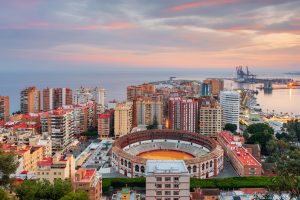
Rental costs fell 0.5% when compared to June
In Spain, the cost of renting a home fell by 0.5% in July, bringing the average cost per square metre, per month, to €12.59. When compared to the same month in the previous year, the variation is +8.6%. This annual increase is the second highest recorded in the last 12 months. Spain has gone from a year-on-year variation of 3.4% in July 2023 to 8.6% in the same period in 2024. In the last 12 months analysed, the price of housing has gone from 11.59 euros/m² in July 2023 to 12.59 euros/m² in July 2024.
“The price of renting property in Spain remains at maximum levels across the board. In fact, 15 of the 17 autonomous communities have reached record levels in rental prices. In addition, for the first time in history, the price of rent already exceeds the tacit barrier of 1,000 euros per month on average. After two consecutive years of very significant increases and after having presented the sharpest acceleration in history, the price of rent is higher than ever. The main reason is the contraction of available supply that has occurred in recent years, of around 30%, together with the intense demand that is increasing because at the moment it is the main housing solution to access housing in Spain“, explained María Matos, Director of Studies for Fotocasa.
Autonomous Communities
If we look at rental prices compared to those of a year ago, we see that all communities saw year-on-year increase in price in July. The communities with increases higher than 10% are: Asturias (17.9%), Madrid (15.6%), Castilla-La Mancha (14.8%), Galicia (11.9%), Region of Murcia (10.3%) and Basque Country (10.0%). They are followed by the Valencian Community (9.7%), Canary Islands (8.4%), Castilla y León (7.9%), Andalusia (7.8%), Aragon (7.8%), Extremadura (5.6%), Catalonia (5.3%), Navarra (4.9%), Balearic Islands (2.7%), La Rioja (2.6%) and Cantabria (2.1%).
Regarding the ranking of Autonomous Communities with the most expensive rental property in Spain, Madrid and the Balearic Islands are in first place, with prices of €19.68/m² per month and €17.64 /m² per month, respectively. Eight more communities follow with prices above €10.00 /m² per month and they are: Catalonia (€16.84 /m²), the Basque Country (€16.00 /m²), the Canary Islands (€13.98 /m²), Cantabria (€13.31 /m²), the Valencian Community (€12.47 /m²), Navarra (€11.45 /m²), Asturias (€10.52 /m²) and Andalusia (€10.41 /m²).
Provinces
In 46 of the 48 provinces, the year-on-year price of rental housing increased in July 2024, except for Burgos and Tarragona. Increases of more than 10% were recorded in 15 provinces.
The provinces with year-on-year increases of more than 10% are: Palencia (25.1%), Asturias (17.9%), Cuenca (17.7%), Ávila (15.9%), Madrid (15.6%), Cáceres (13.6%), Santa Cruz de Tenerife (13.5%), Girona (13.5%), A Coruña (12.4%), Valencia (12.1%), Ciudad Real (11.4%), Málaga (11.3%), Bizkaia (10.5%), Murcia (10.3%) and Castellón (10.0%).
As for prices, 20 provinces exceed 10.00 euros per square metre per month. The three most expensive provinces are Madrid with €19.68 /m² per month, Barcelona with €18.89 /m² per month and Gipuzkoa with €18.30 /m² per month. On the other hand, the three cheapest provinces to rent a home are: Jaén with €6.11/m² per month and Ciudad Real with €6.14/m² per month.














